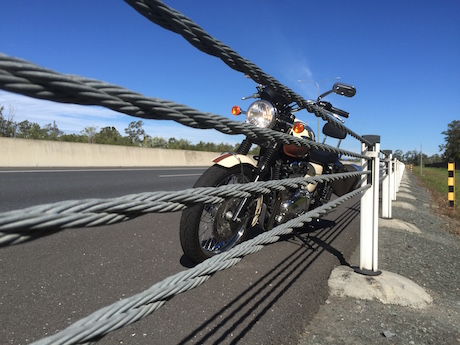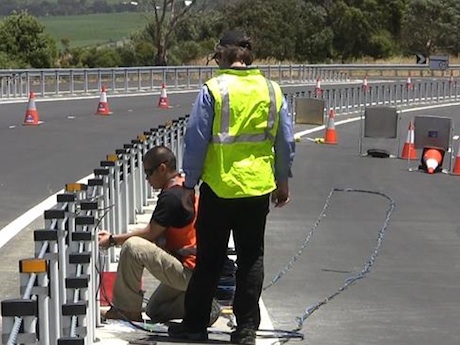All riders concerned about the proliferation of wire rope barriers are invited to join a protest ride in Victoria on May 8, 2018.
Independent Riders Group (IRG) spokesman Damien Codognotto has been vocal about his rejection of the wire rope barriers and has organised the ride.
However, he says it is open to everyone, not just members of IRG.
“This wire rope barrier protest/rally is for all road users, but especially the riding public and emergency service workers,” he says.
“This one is for the victims of bad roads and wire rope barriers and for their loved ones. It will be well run and respectful.
“It is organised by a motorcycle and scooter lobby group but it’s everyone’s protest. The emergency services have been invited to attend as wire rope barrier puts them at risk too.”
This follows the recent comments by the Victorian Country Fire Authority which said they block access to crashes and bushfires.
Damien says VicRoads will spend $4 billion on wire rope barriers between 2015 and 2020, yet admits WRB posts pose a deadly threat to riders.
Wire rope protest
The protest will start in Bendigo and head to Melbourne via the Calder Highway with more details to be announced on the IRG Facebook page closer to the event.
There will be anti-wire-rope speeches at Parliament House start at 1pm including people “directly affected by wire rope barrier crashes and Members of Parliament” Damien says.
Divided over barriers
There is little research into the effect of barriers on riders and no conclusive proof from the scant research available.
Australian Motorcycle Council chairman Shaun Lennard says riders are better off hitting any roadside barrier in a crash than having no barrier and hitting a tree.

“They’ve been around in Australia for 25 years now and if the wire barrier was anywhere near the concern that some riders think, there would have been a significant number of fatal crashes caused by the barrier, but there have only been a handful,” he told us earlier this year.
“Many more motorcycle riders are killed hitting trees because there was no barrier than have been killed hitting wire rope barriers,” he said.
Shaun even suggested that the proliferation of cheaper wire rope barriers on straight sections of highway may be a good thing because it means more money can be spent on providing safer barriers on winding roads where riders are more likely to hit them.
“The number of riders running off straight sections and hitting barriers is minuscule,” he says.
However, Damien points out that a rider in Victoria was killed a few months ago because he hit a kangaroo and then ran into a WRB.
Until specific scientific research is carried on the effect of WRB on riders, they will remain divided on whether they impact our safety.
Read some of the many stories below for more views on roadside barrier safety.



